
Chronic traumatic encephalopathy
Chronic traumatic encephalopathy (CTE): a progressive degeneration of neurons Pugilistic dementia was identified in boxers in the 1920s, and chronic traumatic encephalopathy, a more recent term, are considered the same disease. Chronic Traumatic Encephalopathy In Athletes was extensively studied. It occurs in some retired professional football players and other athletes who have had repetitive cranial trauma and in some soldiers with brain injury secondary to internal head injuries due to blast trauma. The reason why only certain people with repetitive cranial trauma develop chronic traumatic encephalopathy and what are the risks of developing it after several cranial traumas (eg, how many, how much) are currently unknown. About 3% of athletes who had multiple (even apparently minor) develop chronic traumatic encephalopathy. Pathologically, chronic traumatic encephalopathy is characterized by deposition of hyperphosphorylated tau protein as neurofibrillary tangles, more prominently in perivascular spaces, depth of cortical sulcus and subpial and periventricular areas. Diagnosis Clinical criteria The criteria for clinical diagnosis of chronic traumatic encephalopathy include: History of head injury Signs and symptoms consistent with chronic traumatic encephalopathy Absence of a more likely explanation of clinical outcomes These criteria are also used in surveys. Routine neuroimaging results such as computed tomography or magnetic resonance imaging are usually normal. Currently, there is no objective and validated in vivo biomarker of chronic traumatic encephalopathy A definitive Chronic Traumatic Encephalopathy Diagnosis is based on neuropathological examination during the autopsy. Treatment Security and support measures There is no specific Chronic Traumatic Encephalopathy Treatment. The supportive measures are similar to those of other dementias can help. For example, the environment should be bright, cheerful and familiar, and should be designed to reinforce orientation (eg, placing large clocks and calendars in the environment). Measures to ensure patient safety (eg, signal monitoring systems for patients who roam) should be implemented. Advice Medications to relieve symptoms Other measures People with chronic traumatic encephalopathy can benefit from psychological counseling, which can help them cope with mood swings. Antidepressants and moodstabilizing medications can also help, especially in the control of suicidal thoughts. To help reduce the risk of chronic traumatic encephalopathy, people who have suffered a concussion are encouraged to rest and refrain from athletics and certain activities over a period of time. Caregivers must take care of themselves Caring for people with dementia is a stressful and demanding activity, and caregivers can become depressed and exhausted and often neglect their own physical and mental health. Caregivers will benefit from the following measures: Learning to effectively meet the needs of those affected by dementia and what can be expected from them: Caregivers can obtain this information through nurses, social workers, organizations and in material published on paper or online. Seek help when needed: Caregivers can consult social workers (such as those at your local hospital) about appropriate sources of help, such as day care programs, nursing home visits, assistance part-time or full-time for household chores and admission to welfare centers. Counseling and support groups can also be beneficial. Take care of them: Caregivers have to remember that they have to take care of themselves. They should not give up their friends, their hobbies and their activities.
© Copyright 2025
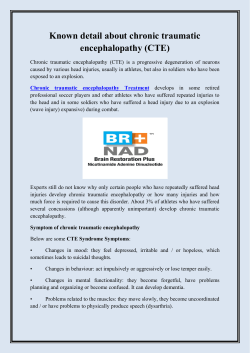
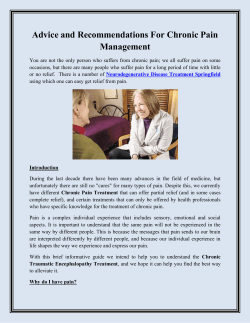
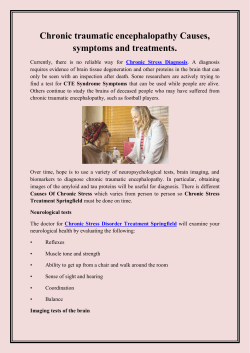
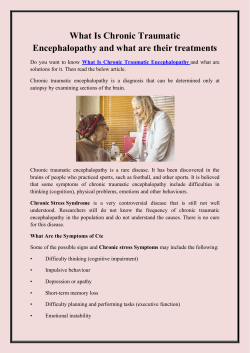

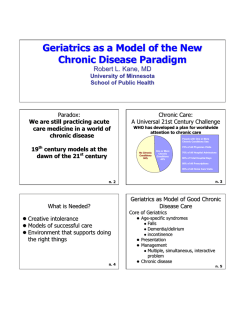
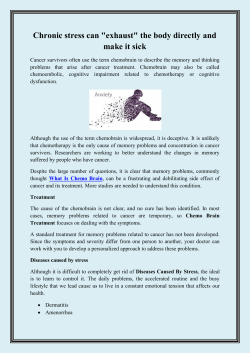

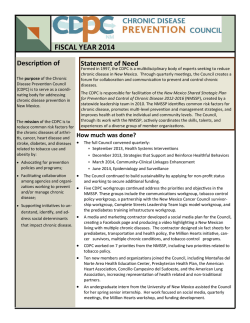
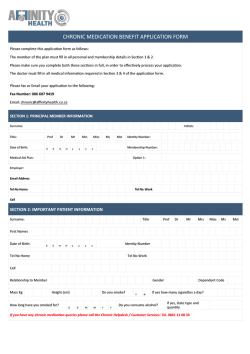

![Download [ PDF ] - journal of evolution of medical and dental sciences](http://s2.esdocs.com/store/data/000494152_1-f3a884eb535d7df1c0e94335539823a4-250x500.png)